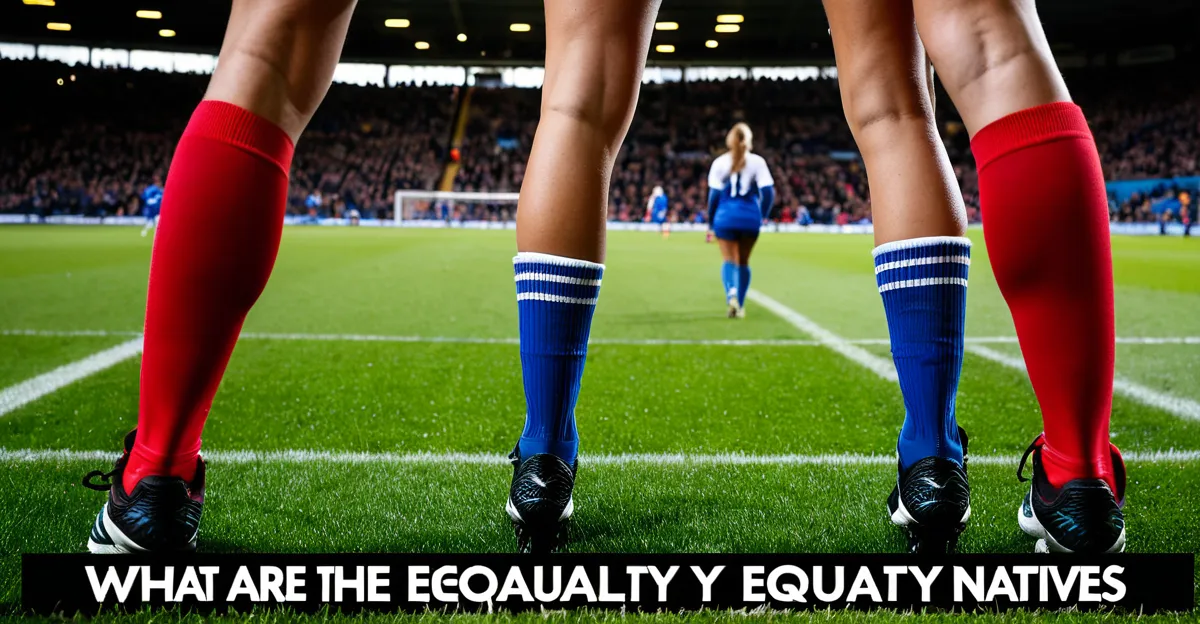Immediate Impact of Gender Equality Initiatives in UK Sports
Since the introduction of gender equality initiatives in UK sports, there has been a clear increase in female participation across multiple disciplines. Sports traditionally dominated by men have witnessed more women stepping onto playing fields, courts, and tracks, signaling a notable shift in engagement. This rise in participation rates is often directly linked to targeted programs and policies aimed at reducing barriers for women and girls.
The immediate effects extend beyond numbers. Early changes in public perception and attitudes towards women in sports have begun reshaping the cultural landscape. Where once women’s sport may have been undervalued or overlooked, there is now growing recognition of female athletes’ skills and achievements. This shift supports a more positive and inclusive environment overall.
Topic to read : How are UK sports governing bodies promoting youth engagement?
Key to these changes has been the implementation of inclusive policies by major sporting bodies across the UK. Organizations have adopted frameworks that emphasize equal opportunities, anti-discrimination measures, and accessible facilities. These policies help foster an environment where talent and commitment are prioritized, regardless of gender. Together, increased participation, evolving societal attitudes, and well-crafted inclusion policies have generated meaningful momentum toward gender equality in UK sports.
Transformations in Leadership and Governance
The push for sports leadership gender diversity in UK sports has yielded significant progress, with a noticeable increase in the number of women occupying leadership and governance positions. This change is not merely symbolic; it brings fresh perspectives and valuable insights that influence UK sports governance structures and decision-making processes. Women in sports management roles contribute to more inclusive policies, ensuring that gender equality remains central to sports development strategies.
In parallel : How Does the Legacy of UK Athletes Influence Future Sports Stars?
Research shows that women in sports management often advocate for greater inclusivity, impacting resource allocation and program priorities. For example, gender-balanced boards within UK sports organisations have demonstrated improved governance outcomes by combining diverse experiences and expertise. These boards tend to implement proactive gender equality measures that foster more equitable environments across clubs and federations.
Increasing female representation at leadership levels also challenges traditional norms, inspiring younger generations to aim for roles beyond the playing field. While progress continues, ongoing efforts focus on sustaining this upward trend, recognizing that leadership diversity directly correlates with broader success in achieving gender equality in UK sports.
Changes in Funding and Resource Allocation
The shift toward sports funding equality has marked a significant change in how resources are allocated within UK sports. Recent UK sports funding trends reveal an increased investment in women’s sports and mixed-gender teams, driven largely by gender equality initiatives that aim to level the playing field financially. These changes reflect a broader recognition that equitable investment is essential to sustain growth in female participation and improve competitive standards.
Sponsorship and media investment have followed suit, with more brands and broadcasters directing funds toward women’s sports. This uptick not only enhances visibility but also creates a virtuous circle, encouraging more participation and interest. The immediate effects include more robust financial backing for female athletes and teams, which supports better training environments and increased professional opportunities.
Despite progress, challenges remain. Full parity in resource allocation is yet to be achieved, as women’s sports still lag behind in funding compared to men’s equivalents. Structural issues and traditional biases contribute to these gaps. Continued efforts focus on refining funding models to ensure sustained, equitable investment, recognizing that addressing financial disparities is crucial for long-term success in gender equality UK sports.
Media Coverage and Representation of Female Athletes
The increase in women’s sports media UK coverage has brought a noticeable boost to the visibility and recognition of female athletes. This rise in media attention results in broader public engagement and greater awareness of women’s achievements in sport, thereby reinforcing their importance in the UK sports landscape. As coverage expands, it challenges outdated perceptions and showcases the skill and dedication of female competitors.
Representation female athletes has improved through more frequent and varied media portrayals, including television broadcasts, online platforms, and print journalism. Consistent exposure contributes to shaping positive narratives around women’s sports, fostering inspiration, and attracting new participants. However, while progress is evident, disparities persist in the volume and quality of coverage compared to men’s sports.
The media coverage impact on the growth of women’s sports is significant. Increased visibility encourages investment, sponsorships, and fan support, which, in turn, enhances opportunities for female athletes. This virtuous cycle helps close the gap in gender equality UK sports. Ongoing initiatives aim to address remaining gaps by promoting equal representation and combating stereotypical portrayals. Maintaining and expanding balanced media coverage remains crucial to sustaining gender equality’s momentum in UK sports.
Policy Developments and Legislative Changes
In recent years, UK sports policy has undergone significant transformation, focusing explicitly on embedding gender equality legislation into the fabric of sport governance. Key policy shifts at both national and organisational levels mandate that sports bodies implement frameworks designed to promote equitable access, participation, and leadership opportunities for women. These legislative drivers enforce standards, ensuring that gender equity moves beyond aspiration to measurable action.
Mandated targets form a cornerstone of this approach. For instance, quotas and minimum representation requirements compel organisations to increase women’s involvement in decision-making and operational roles. Evidence shows that such targets have been effective in accelerating progress where voluntary efforts fell short. They provide clear goals and accountability mechanisms, essential for maintaining momentum on gender equality UK sports initiatives.
Institutional reform complements these policy measures. Sports federations and governing bodies have restructured committees and funding allocations to support compliance with legislative demands. This reshaping of internal systems fosters sustainable cultural change, embedding inclusivity and equality into routine operations. Overall, policy advancements and legal frameworks play a pivotal role in advancing gender equality UK sports, driving systemic shifts that underpin more inclusive future growth.
Social and Cultural Shifts Within Sporting Communities
The social impact gender equality initiatives have sparked within UK sports is profound, extending well beyond policy changes to challenge long-standing cultural attitudes. Traditionally, sports environments reflected rigid gender stereotypes, often discouraging female participation and leadership. However, recent years have seen a significant culture change UK sports, with communities increasingly embracing inclusivity and diversity as core values.
These cultural shifts are evident in grassroots programmes that actively engage local communities to promote gender equality. Community-led efforts focus on dismantling stereotypes by encouraging girls and women to participate from a young age, often providing mentorship and safe spaces for development. Such initiatives contribute to reshaping societal norms around women’s roles in sports, moving toward normalization of gender equity.
Moreover, this broader cultural transformation reinforces diversity, equity, and inclusion goals across all levels of UK sport. The ripple effects of increased awareness lead to more supportive environments, where differences are valued and barriers to entry are systematically reduced. This community engagement is crucial; it ensures that equality is not merely procedural but embedded socially, building lasting momentum for gender parity in UK sports.
Remaining Barriers and Critiques of Gender Equality Initiatives
Despite considerable progress, significant barriers to gender equality persist within UK sports, challenging the full realization of these initiatives’ goals. One core issue is the entrenched structural and cultural factors that continue to favor male dominance, affecting opportunities, funding, and visibility. These underlying causes mean that even with policies in place, ongoing challenges in implementation and acceptance remain.
Criticism of gender initiatives UK sports often centers on the perceived pace and scope of change. Some argue that progress is too slow, with measures failing to dismantle deeply embedded inequalities swiftly enough. For example, while increased female participation is notable, leadership and resource allocation advances lag, causing frustration among advocates. Others highlight that tokenistic approaches risk undermining genuine inclusivity when targets are met superficially without cultural change.
Addressing these issues requires multifaceted strategies that combine policy enforcement with community engagement and education. Proposed solutions include strengthening accountability mechanisms, promoting allyship among male counterparts, and improving transparency in funding and governance. These efforts aim to tackle both visible disparities and the subtler, systemic obstacles that hinder sustained gender equality UK sports progress.
Case Studies of Gender Equality Initiatives in Practice
Gender equality UK sports initiatives have manifested in impactful, real-world examples illustrating both the challenges and successes of these efforts. Examining notable UK sports case studies reveals measurable outcomes that demonstrate the potential and limitations of gender-focused programs.
One standout example is the FA’s “Gameplan for Growth”, which strategically targets raising the profile of women’s football. This initiative has successfully increased participation rates by providing structured pathways for young girls and enhancing professional opportunities for female players. The “Gameplan for Growth” also emphasizes inclusivity by working across grassroots, amateur, and elite levels, creating a comprehensive support system. Its approach includes funding dedicated to coach education and community outreach, reflecting a strategic alignment with broader gender equality UK sports goals.
UK Sport’s targets for leadership diversity exemplify how prescribed benchmarks can transform sports governance. By setting clear quotas for women in management roles, these targets have expanded the presence of women in sports management and strengthened governance frameworks. This case study highlights the tangible influence of mandated gender diversity on decision-making processes and organisational culture within UK sports governance. Such targets increase accountability while encouraging a sustainable pipeline of female leaders.
Media campaigns focused on highlighting female athletes provide another crucial dimension. Increasing the visibility of women through targeted storytelling and broadcast initiatives enhances the media coverage impact by promoting positive representations female athletes. Campaigns tailored to challenge stereotypes and celebrate athletic achievements contribute significantly to elevating public engagement and sponsor interest in women’s sports media UK. Results include heightened attendance at matches and stronger fan communities, bolstering overall support for gender equality initiatives.
Community outreach programmes expanding access for girls offer practical, grassroots evidence of social impact gender equality efforts. These programmes operate by breaking down local barriers, providing safe environments, and mentoring girls to participate confidently across various sports disciplines. Their success lies in fostering culture change UK sports at the community level, helping normalize inclusivity and diversity through sustained, inclusive engagement strategies.
In summary, UK sports case studies collectively underscore the importance of a multi-layered approach—combining policy, media efforts, and community initiatives—to advance gender equality UK sports effectively. Each example provides insight into measurable immediate effects and sustainable progress, illustrating how initiative outcomes can reshape the sports landscape for women in the UK.


